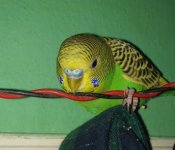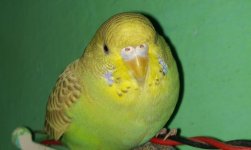devilhunaid
New member
- Dec 18, 2018
- 27
- 0
- Parrots
-
Budgies :
Neon - Birthday :: Unknown , Brought home :: 16 December 2018
Tina - Birthday :: Unknown , Brought home :: 16 December 2018
Hello everyone I am back with a new question.
My two budgie Neon( male ) Tina ( female) but I am not sure about their gender because they are 8 months old.( I am even not sure about their age)
From days I was looking at the Neon courting Tina. He is bobbing his head, taping his beak on her and all but Some day ago I saw Tina doing same thing with Neon, even she was putting one leg on Neon back I can't understand why she is doing this.
What is the reason behind this behaviour can anybody explain?
My two budgie Neon( male ) Tina ( female) but I am not sure about their gender because they are 8 months old.( I am even not sure about their age)
From days I was looking at the Neon courting Tina. He is bobbing his head, taping his beak on her and all but Some day ago I saw Tina doing same thing with Neon, even she was putting one leg on Neon back I can't understand why she is doing this.
What is the reason behind this behaviour can anybody explain?

